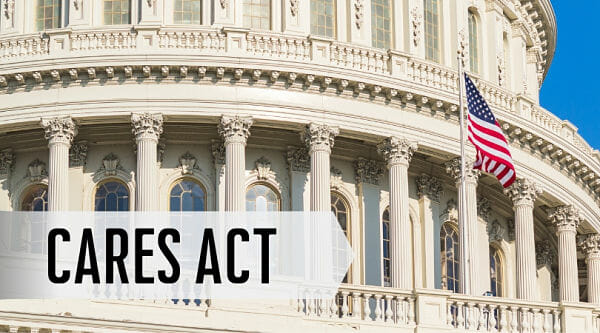With the ongoing COVID-19 crisis affecting people and businesses globally, Congress has been working to relieve suffering Americans. In an effort to combat the spread of the pandemic and support relief efforts, the Coronavirus Aid, Relief, and Economic Security (CARES) Act was signed into law. The bill includes a $2.2 trillion program to assist in loan forgiveness, support small businesses, enhance unemployment insurance, and provide loans to those that were severely impacted. This bill also provides tax relief to individuals and business to help increase the liquidity of the economy.
Here are the highlights of the tax provisions of the new (CARES) Act:
Individual Tax Relief
1.Recovery Rebates:
-
- $1,200 recovery rebates for individual taxpayers, $2,400 for joint filers, with a $500 credit for each child.
- The threshold is based upon 2018 adjusted gross income (unless a 2019 return has already been filed).
- The rebate begins to phases out at $75,000 for singles, $112,500 for heads of household, and $150,000 for joint taxpayers.
- It phases out entirely at $99,000 for single taxpayers with no children and $198,000 for joint taxpayers.
Eligibility: The individual
-
- must not be:
- a nonresident alien.
- able to be claimed as a dependent on another taxpayer’s return.
- an estate or trust.
- must have included a social security number for the taxpayer, spouse, and eligible children on the 2018 or 2019 return.
- must not be:
2.Retirement Plans:
-
- Waives the 10% penalty on early withdrawals up to $100,000 from qualified plans for coronavirus-related distributions.
- Under a coronavirus penalty waiver, the distribution must be made in the 2020 calendar year to an individual or spouse-
- Diagnosed with COVID-19 with a CDC-approved test, or
- Who experiences adverse financial consequences as a result of quarantine, business closure, layoff, or reduced hours.
- Any income attributed to an early withdraw is subject to a tax over a three-year period.
- Distributions may be paid back to the plan.
3. Charitable Contributions:
-
- Allows an above-the-line deduction of up to $300 for charitable contributions.
- Allows an individual to claim a deduction even if the individual does not itemize deductions.
- For the 2020 tax year, individuals can claim an unlimited itemized deduction for charitable contributions which is normally limited to 60% of AGI.
4. Student Loans Paid by Employers:
-
- An exclusion of up to $5,250 from income for payments of employee’s education loans.
- The payment can be made to the employee or directly to the lender.
- The exclusion only applies if payments are made after the date of enactment and before January 1, 2021.
5. Required Minimum Distribution (RMD) Requirements:
-
- Provides that the RMD requirements do not apply for calendar year 2020.
Business Tax Relief
- Employee Retention Credit:
- Grants employers a credit against employment taxes equal to 50% of qualified wages paid to employees who are not working due to cessation of business or decline in gross receipts.
- The credit is limited to $10,000 in aggregate per employee for all quarters.
- The credit applies to wages paid after March 12, 2020 and before January 1, 2021.
- Payroll Tax Deferral:
- Deferment of payments of payroll taxes from the beginning period of the CARES Act to December 31, 2020.
- Net Operating Losses (NOL):
-
Temporarily removes the taxable income limitation to allow an NOL to fully offset income.
-
Provides that NOLs arising in a tax year beginning after December 31, 2018 and before January 1, 2021 can be carried back five years.
-
- Business Interest Expense Limitations:
- Increases the limitation amount from 30% to 50% of the taxpayer’s adjusted tax income in 2019 and 2020.
- Qualified Improvement Property:
- Allows qualified improvements as a category eligible for 100% bonus depreciation.
-
Effective for property placed in service after December 31, 2017.
For further details on the CARES Act, a more detailed analysis can be viewed here.
See our other posts for information on the SBA loan provisions, including the Paycheck Protection Program, Small Business Debt Relief Program, and prior legislation.







Leave A Comment